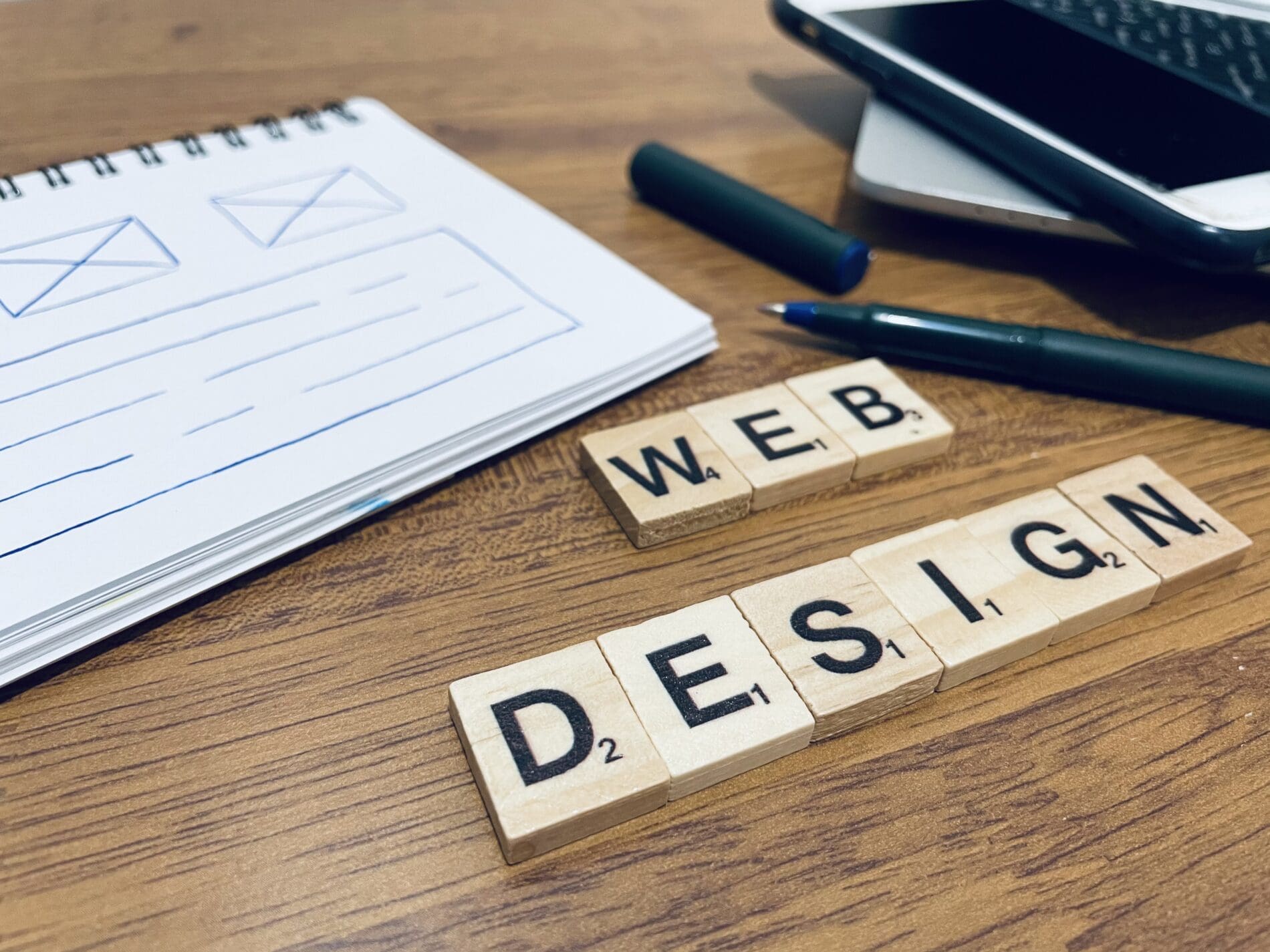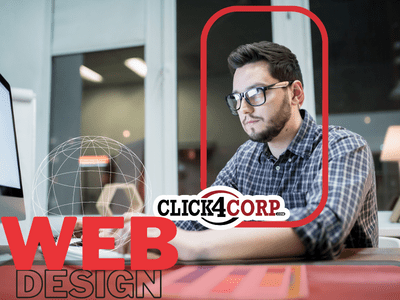
The Future Of Web Design: Trends For 2024 And Beyond
With technology advancing at lightning speed, it’s hard to predict what the digital landscape will look like in just a few years. However, we’ve scoured the latest trends and innovations to bring you our predictions for 2024 and beyond. From AI-powered designs to immersive experiences, get ready to explore the exciting possibilities that lie ahead!
The Future of Web Design
 In the not-so-distant past, the only way to design a website was to hand-code everything using HTML. This was a time-consuming process, and it wasn’t always easy to create a website that looked good. Then, the future of web design software like Adobe Dreamweaver and Microsoft FrontPage came along and made it possible for anyone to create a website without knowing how to code.
In the not-so-distant past, the only way to design a website was to hand-code everything using HTML. This was a time-consuming process, and it wasn’t always easy to create a website that looked good. Then, the future of web design software like Adobe Dreamweaver and Microsoft FrontPage came along and made it possible for anyone to create a website without knowing how to code.
Nowadays, there are even more options for creating a website, including content management systems (CMS) like WordPress and Wix. And with the rise of mobile devices, responsive design has become essential for any site that wants to provide a good user experience on all devices.
So what does the future of web design hold? Here are some predictions:
1. More focus on user experience (UX) – As web users become more demanding, businesses will need to focus more on delivering a great UX. This means making sure websites are easy to use and navigate, loading quickly, and providing relevant and targeted content.
2. More use of artificial intelligence (AI) – AI can be used for things like automatically generating website designs based on a set of criteria or helping users find the information they’re looking for on a site. We will likely see more AI being used in the future of web design.
3. More use of voice search – With the rise of digital assistants like Siri, Alexa, and Google Assistant, voice search is becoming more popular.
Predictions for Web Design in 2024
Web design is always evolving. What was popular last year may not be popular this year, and what’s popular now may not be popular in the future. As we move into the next decade, there are a few predictions for the future of web design trends that we think will become more prevalent.
1. Minimalism will continue to be popular. Minimalist designs are clean, sleek, and easy to navigate. They focus on the content and don’t distract the user with unnecessary elements.
2. Flat design will also remain popular. Flat design uses simple shapes and colors and is often mistaken for minimalism. However, flat design can be more elaborate than minimalism and can still use some shadows and gradients.
3. Material design will become more widely used. It is a type of flat design created by Google. It uses grid-based layouts, responsive animations, and transitions.
4. More designers will use typography as a focal point in their designs. Typography can make or break a design so it’s important to choose the right font for your project. In the next decade, we predict that more designers will use unique and interesting fonts to make their designs stand out from the rest.
5 . Whitespace will continue to be used to create balance and contrast in designs. Whitespace is the empty space around elements on a page. It’s often used to separate different sections of content or highlight certain elements. In the future, we expect to see more creative uses of whitespace in designs.
6. Animations will become even more popular as designers use them to engage users and make websites more interactive. Animations can be used to draw attention to certain elements, guide users through the site, or just add a touch of fun.
7. Mobile-first design will continue to rise in popularity as more people access the web on their phones and tablets. The mobile-first design focuses on providing an optimal user experience for smaller screens first, before creating a version for larger screens. This ensures that all users have a good experience regardless of device.
Impact of AI and Automation on Web Design
The future of web design is both exciting and daunting. Many believe that the rise of artificial intelligence (AI) and automation will lead to mass unemployment, as jobs are increasingly replaced by machines. However, others believe that these technologies will create new opportunities for humans to focus on higher-level tasks, freeing us up from mundane tasks.
In terms of web design, AI and automation are already having a profound impact. For example, automated tools can now generate detailed designs based on a client’s specifications. This means that web designers can now focus on other aspects of the project, such as user experience (UX) or content strategy.
Similarly, AI is being used to create more realistic simulations of how a website will look and function before it is even built. This allows designers to test out different designs and make changes before any code is written. Ultimately, this results in better websites for everyone involved – clients, designers, and end-users.
Looking to the future, it’s clear that AI and automation will continue to transform web design. As these technologies become more sophisticated, they will enable us to create ever-more complex websites with ease. So whatever the future may hold, one thing is for sure – the future of web design is going to be fascinating to watch!
Trends in Responsive and Mobile Design
There’s no doubt that responsive and mobile design is here to stay. In fact, they’re only going to become more important in the years to come. Here are some predictions for trends in responsive and mobile design:
1. More businesses will adopt responsive design. As mobile devices become more ubiquitous, it’s becoming increasingly important for businesses to have a website that looks great on all screen sizes. Responsive design is the best way to accomplish this, and we expect to see more businesses adopting it in the coming year.
2. We’ll see more use of CSS media queries. Media queries are a powerful tool for creating responsive designs, and we expect to see them used more often in the future.
3. More designers will focus on usability. As responsive and mobile design becomes more common, designers will need to pay more attention to making sure their designs are easy to use on small screens. This means simplifying layouts and using larger font sizes and buttons.
4. We’ll see more experimentation with new technologies. With the rise of responsive and mobile design, there’s been a renewed interest in experimental technologies like CSS3 and HTML5. We expect to see even more experimentation in the coming year as designers push the boundaries of what’s possible on the web.
Adaptive User Interfaces
User interfaces are constantly evolving to meet the needs of users. As we move into the future, we can expect to see more adaptive user interfaces that take into account the user’s environment and context.
We will see an increase in the use of voice input and output as well as gesture-based controls. This will allow users to interact with their devices in a more natural way.
There will also be a trend toward more personalized user experiences. This means that websites and apps will need to be able to adapt to the individual user’s preferences and tastes.
We can also expect to see a continued increase in the use of artificial intelligence in user interfaces. This will help provide more intelligent and helpful responses to user queries.
Accessibility Improvements
Accessibility has always been an important part of the future of web design, but it is becoming increasingly important as the population ages. There are a number of ways to improve the accessibility of your website, including:
1. Use clear and concise text.
2. Make sure your website can be navigated using a keyboard or screen reader.
3. Make sure the colors are high contrast and the font size is large.
4. Provide alternate versions of your content, such as audio or video.
5. Optimize your website for search engines so that people with disabilities can easily find your content.
By following these tips, you can make sure that your website is accessible to everyone, regardless of their ability level.
Security Implications for Web Design
In the past few years, we have seen a number of high-profile security breaches affecting both individual websites and entire industries. As the web becomes more integral to our lives, it is crucial that designers take security implications into account when creating new sites and applications.
There are a number of steps that can be taken to improve security, such as using secure protocols (https), encrypting data in transit, and implementing strong authentication measures. However, even with these measures in place, there will always be a risk of attack. As such, it is important to design with resilience in mind, so that if an attacker does succeed in breaching a site or application, the damage is minimized.
Some of the key considerations for designing resilient systems include: ensuring data is backed up and can be quickly restored in the event of an attack; coding defensively to anticipate and mitigate malicious input; and designing for fail-over so that critical services can continue to operate even if part of the system is offline. By taking these measures into account during the design phase, we can build more secure and robust web applications that are better able to withstand attacks.
How Will Data Visualization Be Used?
Data visualization will continue to be used as a way to help people make sense of large data sets. This can be done in a variety of ways, including using charts, graphs, and maps. Data visualization can also be used to create interactive experiences that allow users to explore data in new ways.
Web design has come a long way since it first emerged, and is continuing to evolve at a rapid pace. The future of web design is set to bring us even more exciting new trends and technologies that will make it easier than ever for businesses to create stunning websites that engage their audiences. As technology continues to advance, we can expect even more creative solutions and powerful features that will help brands stand out from the competition. We look forward with anticipation as these advancements start to become reality in 2024 and beyond.
Click4Corp Builds Successful Websites to Build Your Business!
A great website isn’t just about looking good – it’s about being user-friendly, informative, and engaging, too. You don’t need to have the best product or service in the world to attract customers. That’s where Click4Corp comes in. We specialize in building websites that are designed to help businesses succeed.
We start by getting to know your business and your goals. We then create a custom website that is tailored to your specific needs. Whether you need a simple site to get started or a more complex site with e-commerce capabilities, we can build it for you. And we don’t just build websites – we also provide ongoing support and maintenance so you can focus on running your business.
If you’re ready to take your business to the next level with a new website, contact Click4Corp in TX at (469) 441-4678 today. We’ll help you build a site that will help you attract new customers and grow your business!
